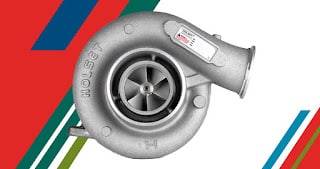The Evolution and Legacy of Mitsubishi’s High-Performance Engines

Mitsubishi’s engineering legacy spans decades of innovative powertrain development, creating engines that have powered everything from everyday commuters to world-championship rally cars. The Japanese manufacturer’s approach to engine design has consistently emphasized durability, tuning potential, and performance at every level, earning them a dedicated following among automotive enthusiasts worldwide.
The Legendary 4G63: Mitsubishi’s Crown Jewel
No discussion of Mitsubishi engines would be complete without examining the iconic 4G63. First introduced in the early 1980s and refined through decades of production, this 2.0-liter inline-four became synonymous with Mitsubishi performance, most notably in the Lancer Evolution series.
The 4G63T (turbocharged variant) featured several design elements that contributed to its legendary status:
- Cast-iron block providing exceptional strength under high boost
- Forged steel crankshaft with significant torsional rigidity
- Aluminum cylinder head with pentroof combustion chambers
- Dual overhead camshafts with solid lifters in later generations
- Oil squirters to cool pistons under extreme conditions
From modest beginnings producing around 200 horsepower in early applications, later factory variants achieved outputs exceeding 280 horsepower (limited by Japan’s “gentleman’s agreement” on advertised power). The engine’s true claim to fame, however, was its extraordinary response to modification, with properly built examples reliably producing over 600 horsepower while maintaining street drivability.
The 4G63’s longevity is particularly noteworthy—powering Evolution models from 1987 through 2006, spanning nine generations before finally being replaced by the 4B11T in the Evolution X.
6G72 Twin Turbo: The Super GT Contender
While the 4G63 earned fame in rally competition, Mitsubishi’s 6G72 twin-turbo V6 established the brand’s credentials in the grand touring segment. Most notably found in the 3000GT VR-4/GTO, this sophisticated 3.0-liter powerplant delivered performance comparable to contemporary supercars.
The twin-turbocharged 6G72 featured:
- Dual overhead camshafts per cylinder bank
- 24-valve design for optimal breathing
- Variable valve timing on later models
- Sequential twin turbochargers in final iterations
- Factory outputs ranging from 276-320 horsepower depending on market and model year
This engine’s character differed significantly from the high-strung 4G63, emphasizing smooth, progressive power delivery suitable for its grand touring application while maintaining substantial tuning potential for enthusiasts seeking additional performance.
4B11T: Evolution Reimagined
The 4B11T represented a significant departure from tradition when it replaced the venerable 4G63 in the tenth-generation Lancer Evolution. This all-aluminum 2.0-liter turbocharged four-cylinder brought several technological advancements:
- Aluminum block and head construction (reducing weight compared to the iron-block 4G63)
- MIVEC variable valve timing on both intake and exhaust camshafts
- Timing chain drive instead of belt system
- Semi-closed deck design with reinforced structure
- Improved thermal efficiency through advanced engineering
Initially met with skepticism from die-hard Evolution enthusiasts, the 4B11T proved its worth through exceptional performance and surprising durability even under modification. Factory-rated at 291 horsepower in U.S. specification, the engine responded impressively to tuning, with modified examples easily exceeding 400 horsepower without internal modifications.
The Diesel Dynamo: 4D56 and 4M41
While performance gasoline engines typically receive the most attention, Mitsubishi has also produced noteworthy diesel powerplants, particularly the 4D56 and its successor, the 4M41.
The 4D56 2.5-liter turbodiesel powered millions of vehicles worldwide, from the Pajero/Montero SUV to the L200/Triton pickup truck, earning a reputation for incredible durability and efficiency. Later common-rail versions significantly improved refinement while maintaining the engine’s legendary reliability.
The 4M41 3.2-liter turbodiesel represented a substantial advancement, offering increased power and torque while meeting ever-stricter emissions regulations. This powerplant continued Mitsubishi’s tradition of creating diesel engines capable of providing hundreds of thousands of miles of dependable service.
Availability Through JDM Importers
Enthusiasts seeking these remarkable engines for restoration, performance upgrades, or replacement have increasingly turned to JDM import specialists. Imported JDM Mitsubishi engines offer several advantages over domestic counterparts:
- Lower mileage due to Japan’s vehicle taxation system that encourages frequent replacement
- Often higher specification levels not available in export markets
- Verification through Japan’s rigorous inspection system
- Availability of rare variants never officially exported
- Comprehensive testing before importation
When considering a JDM Mitsubishi engine purchase, key factors to evaluate include:
- Compression test results across all cylinders
- Oil pressure verification
- Visual inspection for corrosion or damage
- Verification of engine code and specifications
- Warranty terms and support
A quality JDM engine provider will supply detailed documentation of testing procedures and condition assessment, giving buyers confidence in their purchase.
The Legacy Continues
While Mitsubishi’s current vehicle lineup has evolved toward efficiency and practicality, their performance engineering legacy continues influencing enthusiasts worldwide. The 4G63 remains among the most popular engines for modification and swaps, while later powerplants like the 4B11T have earned their place in performance history.
For owners of vehicles equipped with these engines, proper maintenance is essential:
- Regular oil changes using manufacturer-specified lubricants
- Timing belt/chain service at recommended intervals
- Coolant system maintenance to prevent overheating
- Turbocharger oil feed line inspection on turbocharged models
- Intercooler and charge piping integrity checks
With proper care, these engines can provide exceptional longevity while delivering the performance that made them legendary.
The continuing availability of these powerplants through JDM importers ensures that enthusiasts can experience Mitsubishi’s engineering excellence firsthand, whether for restoration projects, performance builds, or reliable replacement options. As automotive technology continues its rapid evolution, the enduring popularity of these engines stands as testament to Mitsubishi’s remarkable engineering achievements.










